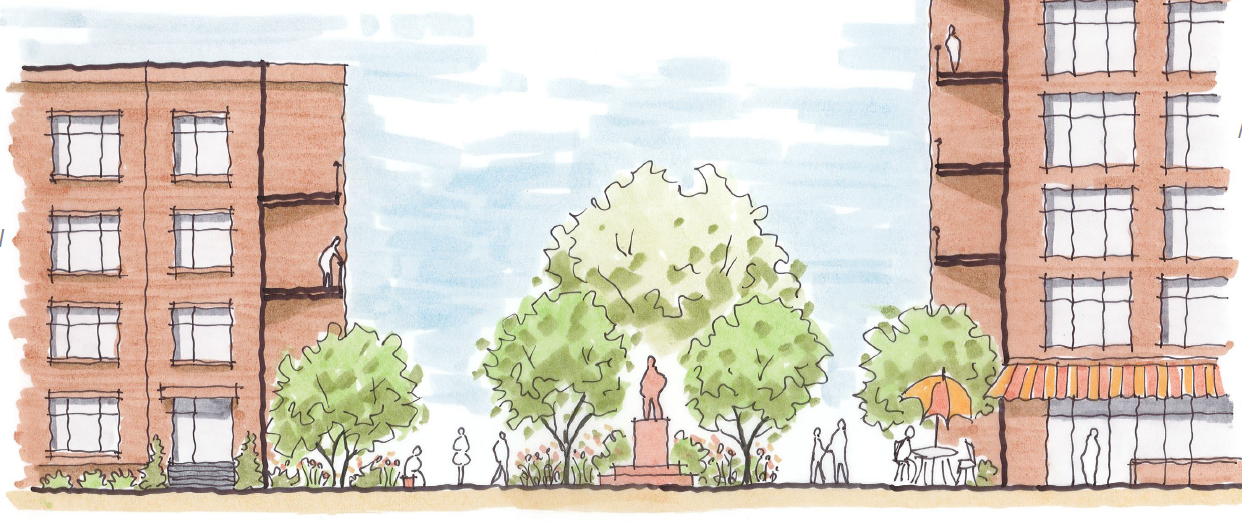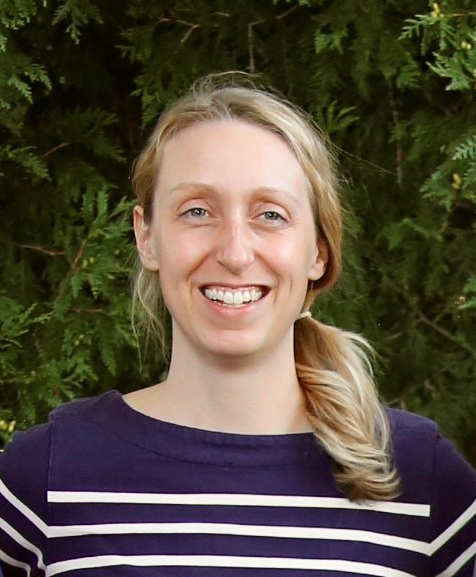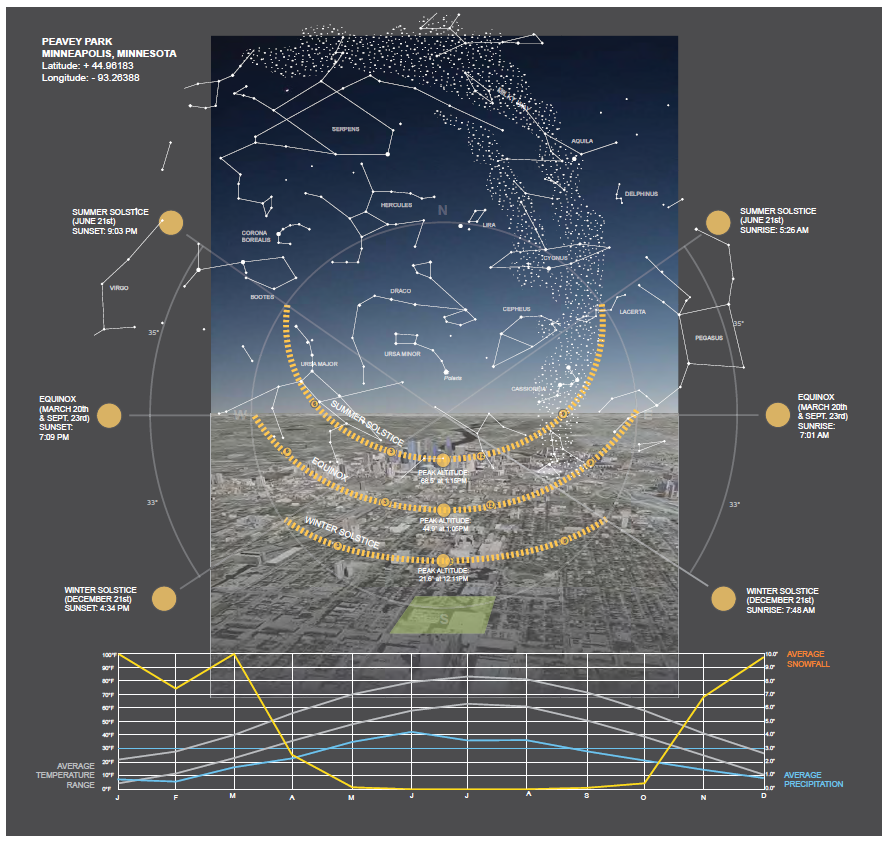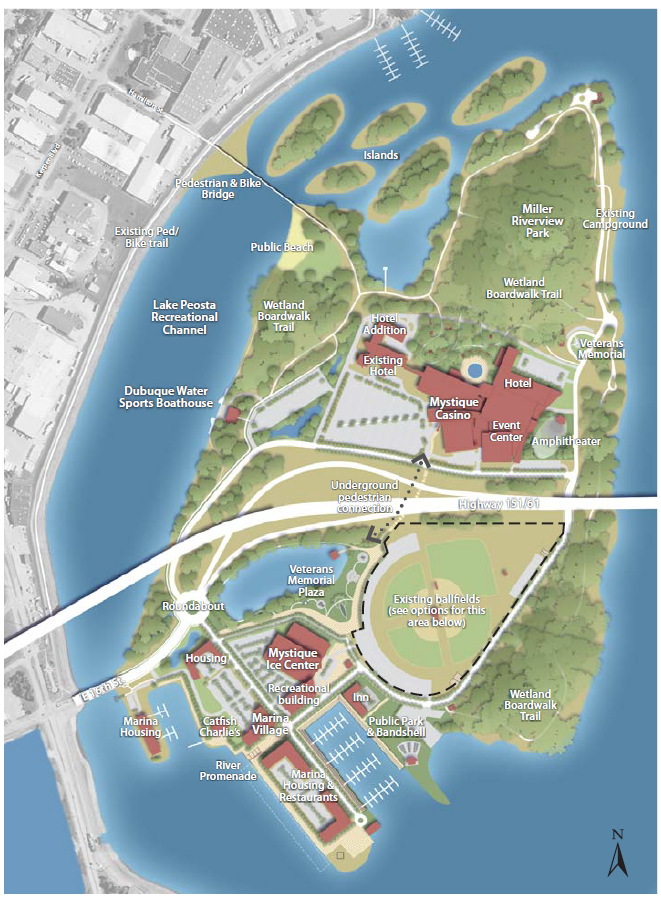Adrienne Bockheim (MLA ‘10) discovered her passion for landscape architecture after the realization that it encompassed everything that fascinated her. Her work, first as a graduate student and then as a project coordinator, with the College of Design’s Minnesota Design Center laid the foundation for a career uniting landscape architecture and urban planning. As a principal city planner for the City of Minneapolis, Bockheim plays a pivotal role in transformative projects like the New Nicollet Redevelopment. In this interview, she shares insights into her career trajectory, offers advice to students, and reflects on how her time at the college shaped her successful career path.

How did you become a principal city planner with the City of Minneapolis?
I assumed that once I graduated, I would follow the “typical” path of being a designer at a design firm. However, during the second year of my program, I was offered a research assistantship at what was then called the Metropolitan Design Center. Now called the Minnesota Design Center (MDC), the center works on urban design and planning research projects. I loved it. When I graduated, it was still the Great Recession and no firms were hiring — but thankfully the MDC director offered me a position coordinating larger planning and urban design research projects.
After three years at the MDC, the economy picked up and I was hired as an urban designer at a local architecture firm. We worked locally, regionally, and nationally on place-based planning projects, such as small area plans, master plans, and corridor plans. I learned that I loved the combination of planning and design — and because I worked on a very small team I got to work on all aspects of our projects including project management, analysis, design, presentations, and responding to requests for proposals.

After two years in that position, I had the opportunity to move to New York City. My husband and I quit our jobs in Minnesota, rented out our house, and moved to NYC for two years. It was hard to break into a place where I had no connections but I ended up getting a planning job at the NYC Department of Transportation where I organized the review of architectural plans to ensure they didn’t impact capital improvement projects. But I missed Minnesota, I missed having more control over projects, and I missed design. When we moved back in 2017, I heard that the City of Minneapolis was looking for a planner and they were especially interested in planners with a design background. These positions are rare in city government but urban planners with a design background are also rare, so it was a perfect match.
How did your time at the College of Design impact your career?
My career would never have happened if not for the College of Design — not just because of the skills I learned in its MLA program but also the research and employment opportunities I was fortunate to receive through the college.
My work with the City of Minneapolis is now mostly ensuring that projects — anything from individual development projects to multi-million dollar infrastructure projects — are following our policies and goals. Being in long-range planning means I get to strategize how city policies and project decisions impact the livability of our city, neighborhoods, and small areas over a long period. My work has a lot of meaning to me and that’s important.
I also get to use the design skills I learned in my MLA program in my day-to-day work as a planner. I approach every task with a problem-solving perspective, using skills in analysis and communication that I can tie back directly to projects I did in studio courses. I am known around my department as someone who can quickly create attractive graphics and concise presentations. Sometimes I am asked to do conceptual design work as part of conversations that staff have with developers to negotiate site plan decisions that contribute to the city’s larger goals. I also know how to “speak the language” when working with engineers and designers involved in projects.

Tell us a little bit about one of your favorite projects.
One of my favorite projects is one that I’m working on right now and have been working on for over three years. I am one of several city staff managing the New Nicollet Redevelopment project at the former Kmart site at Nicollet Ave. and Lake St. in south Minneapolis.
Back in the 1970s, the city purchased and tore down run-down commercial buildings at the intersection in hopes of attracting a developer; the only developer that showed interest was the Kmart store, which required that they remove one block of Nicollet Ave so that the big box store could have a suburban-style parking lot in front of it. This created a barrier in the neighborhood. As of 2020, the city now owns the 10 acres of land and is planning to build Nicollet Ave back through and redevelop the rest of the land as a mixed-use, walkable district.
Since being involved in the project, I have advocated for beginning the project with planning out new public space, as the area is in great need of green and gathering space and I didn’t want it to be an afterthought. I am now managing the contract for the conceptual design of that public space. The final recommended concept will be revealed in early 2024. I’m learning so much about how these large development projects happen behind the scenes and using my skills every day, which is very satisfying.

What do you think are the most critical issues facing cities today?
The three most critical urban issues I see in Minneapolis — and many other American cities — are housing shortages, climate change, and racial equity. They are complex issues that we will be working on for many years, so if you find yourself interested in cities and neighborhoods, consider a career in urban planning and design.
What advice do you have for design students?
I hate the word “networking” so I think of it more as “building relationships”. Every job I’ve gotten has been because of a connection I had with someone, whether they were classmates, local professionals I met through organizations, or friends of people I knew through work or school. Get involved in organizations, ask professionals for informational interviews, and stay in contact with folks you meet. You never know where your next opportunity will come from.
In 1972, Clinton Navarro Hewitt was hired at the University of Minnesota and quickly promoted to Associate VP of Planning. For the next 37 years, Hewitt would shape the U of M’s campuses across the state through dozens of landmark building projects—including Scholar’s Walk, David M. Lilly Plaza, and the Weisman Art Museum—and impact the lives of countless students and colleagues. To celebrate his career of building community and expanding the field of landscape architecture, the Department of Landscape Architecture has worked with the UMN Archives to create the Clinton N. Hewitt archive.
Max Dickson (he/him) earned a Master of Landscape Architecture and a Master of Urban and Regional Planning from the University of Minnesota in 2019. After graduation, Dickson moved to Philadelphia to work with OLIN, an internationally awarded landscape architecture and urban design firm. At OLIN, Dickson’s work has focused on district-scale urban spaces, and leading the emergent research initiative through OLIN Labs called PrideScapes, an exploration of LGBTQ+ landscapes and people within the field of landscape architecture.
It wasn’t until he became a TA during graduate school that Professor Emeritus John Koepke realized he enjoyed teaching as much as working in a design firm. After hearing about an open position at the University of Minnesota, Koepke gave “the best interview of his life” and became Department of Landscape Architecture Head. During his time, Koepke helped the department become internationally ranked and built long-term connections with communities across Minnesota. In this interview, Koepke discusses his favorite parts about teaching, the challenges he faced, and gives advice to design professionals and academics.





